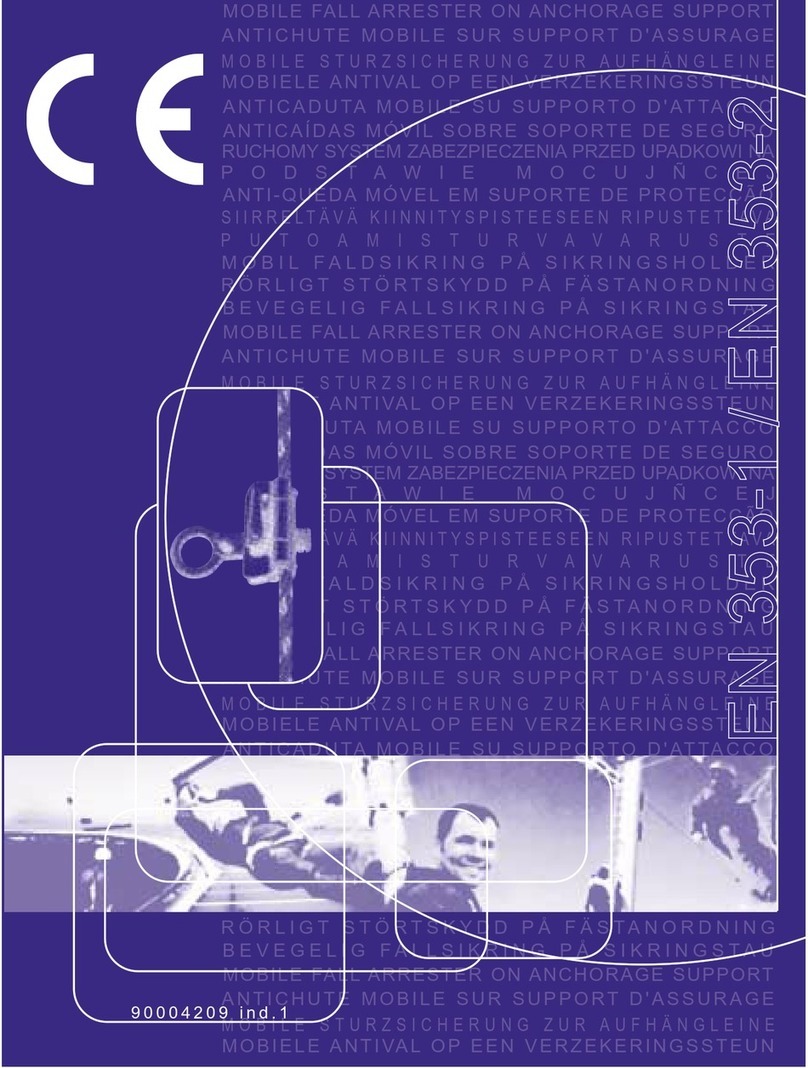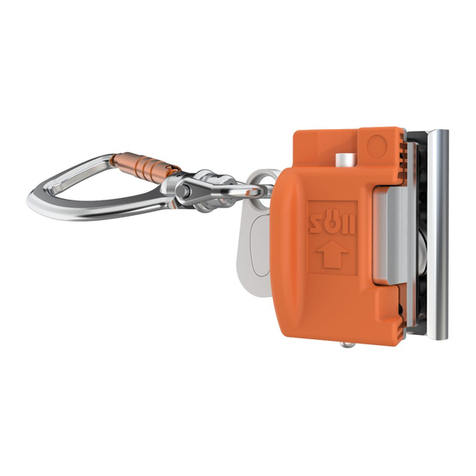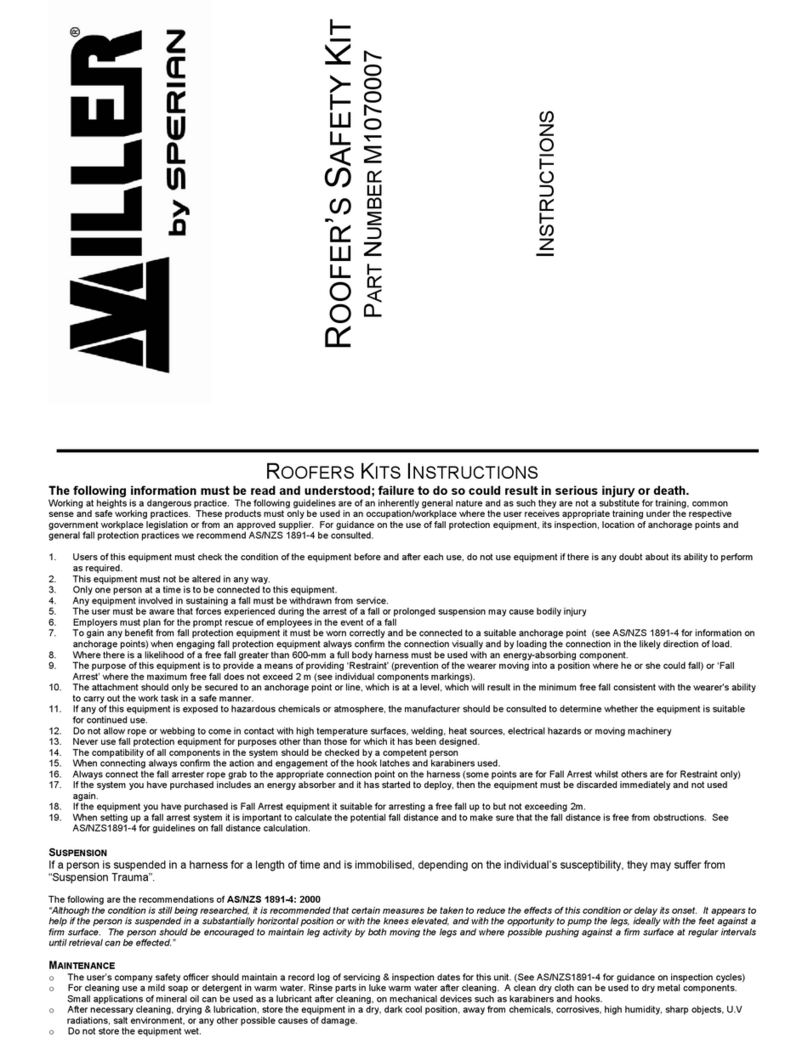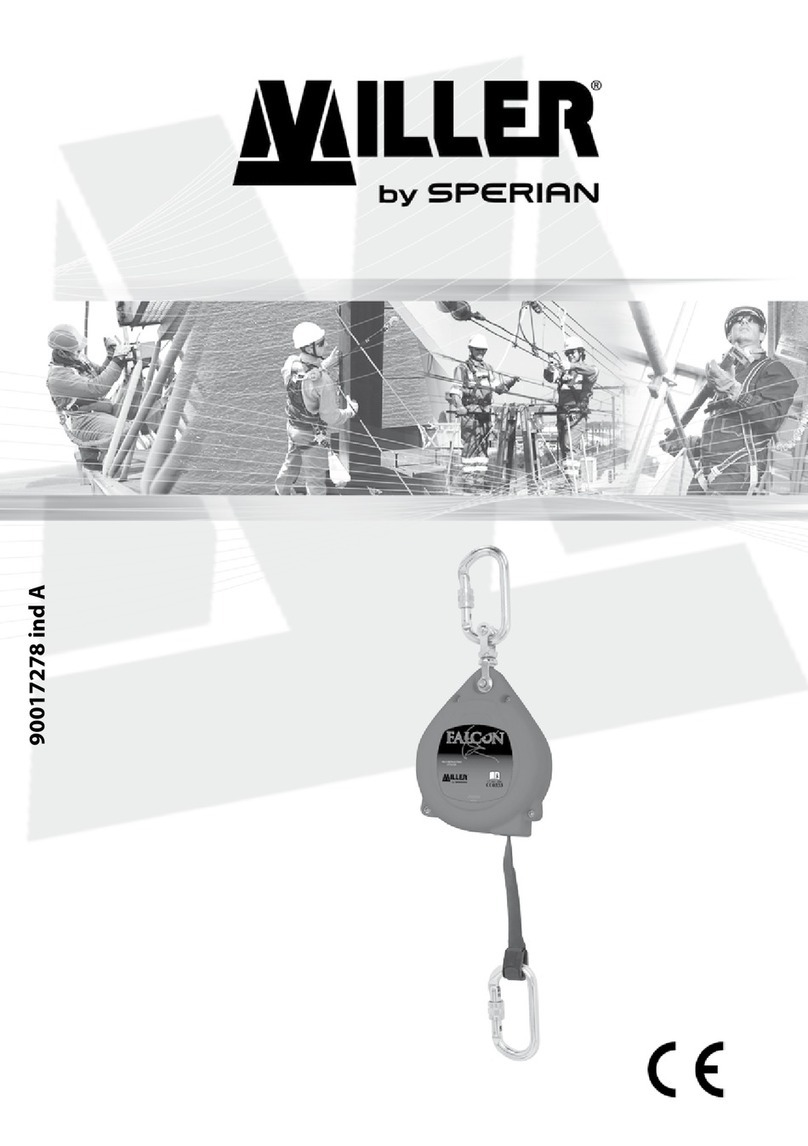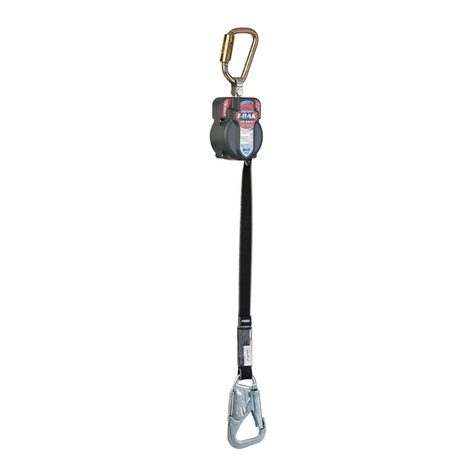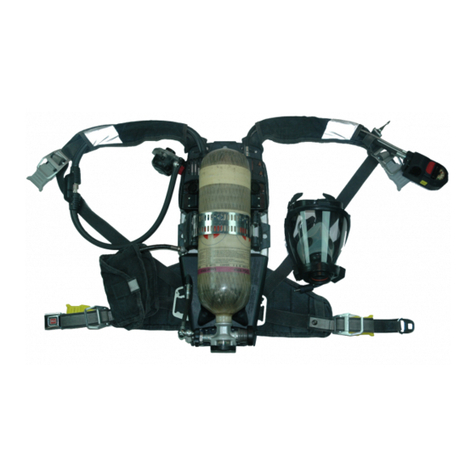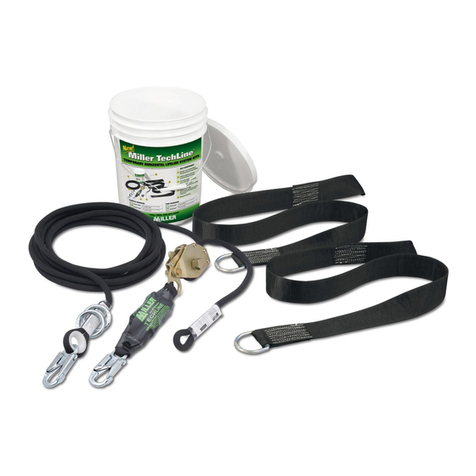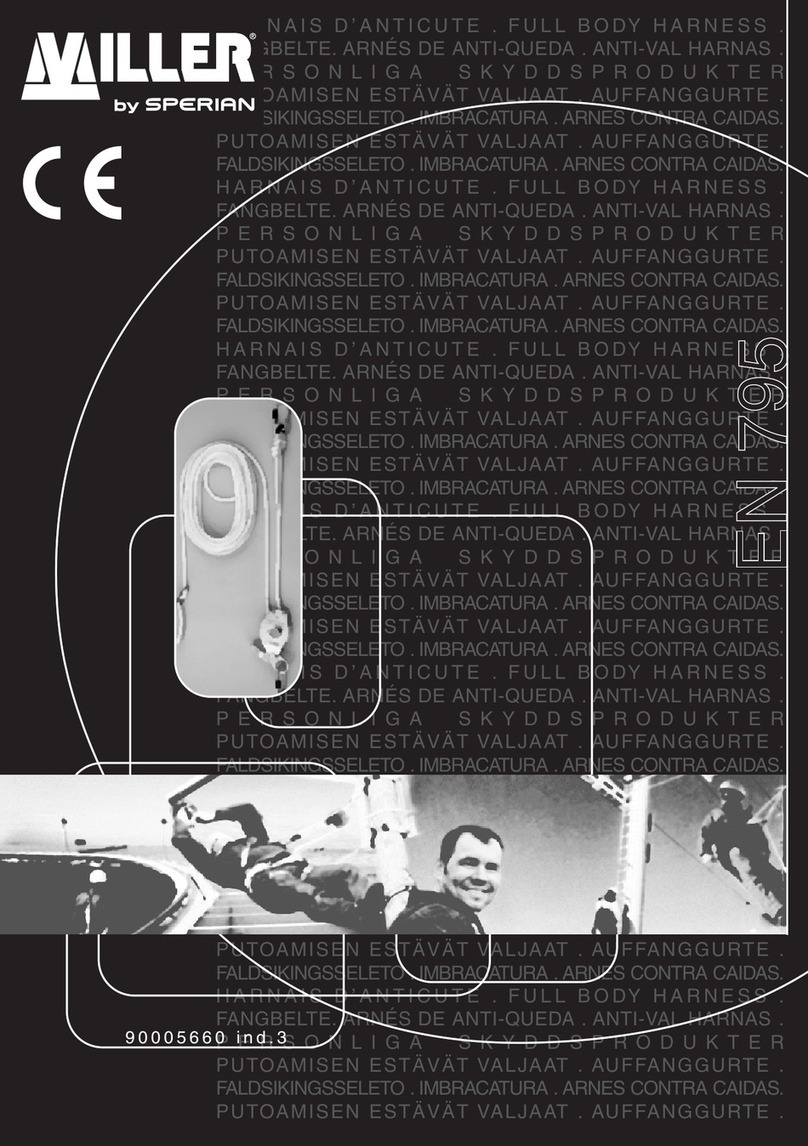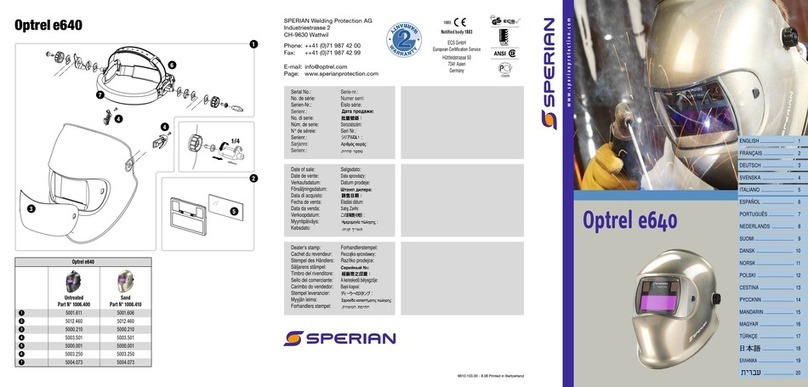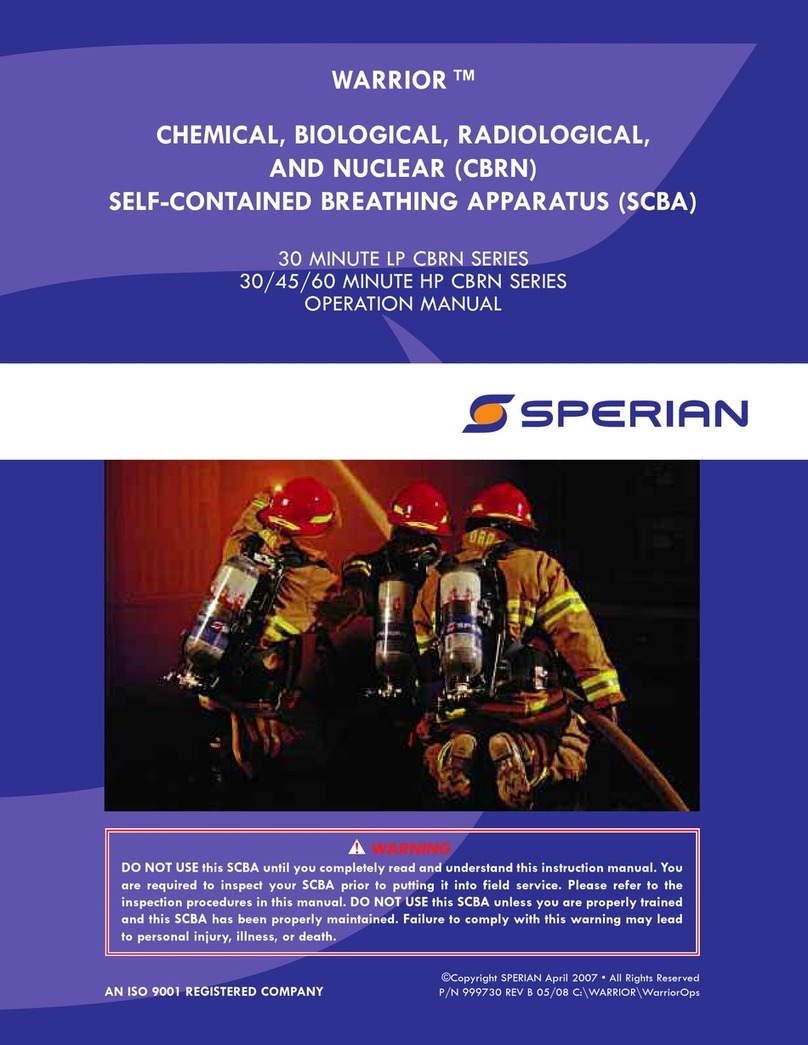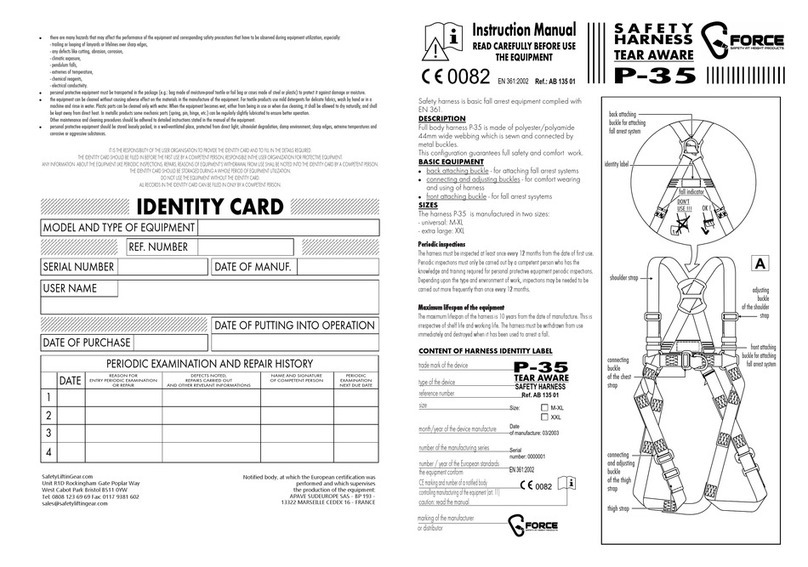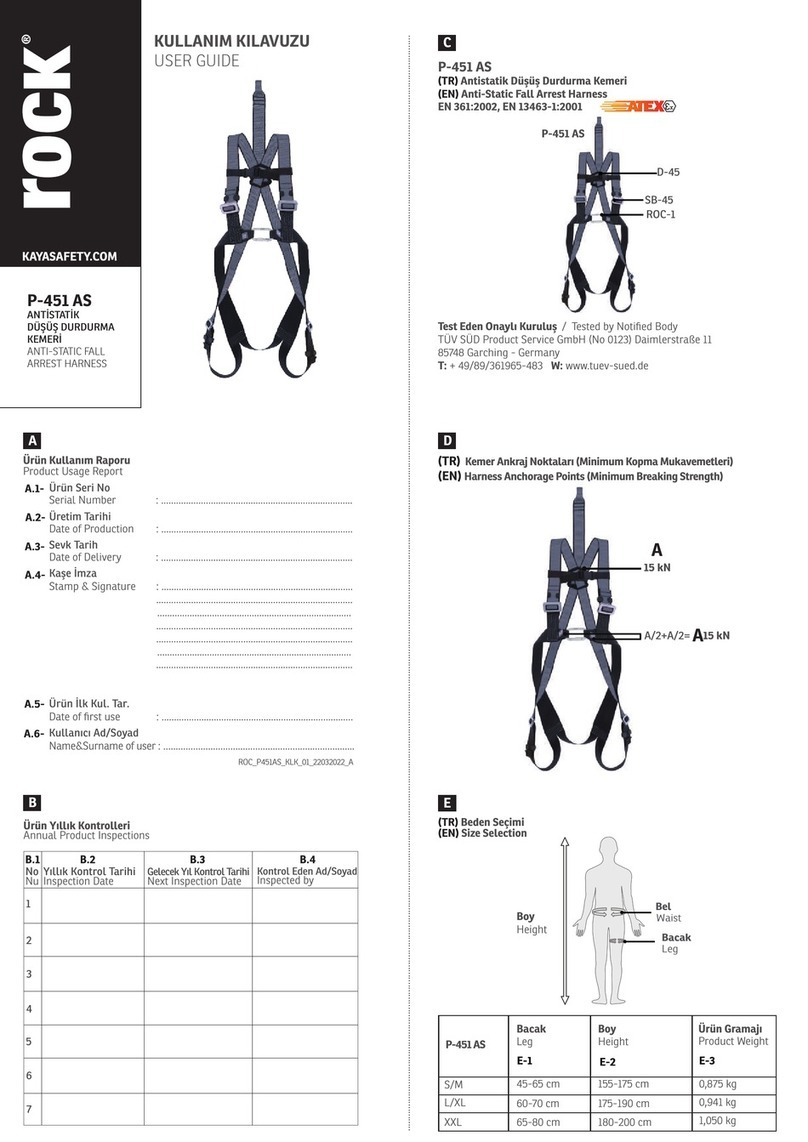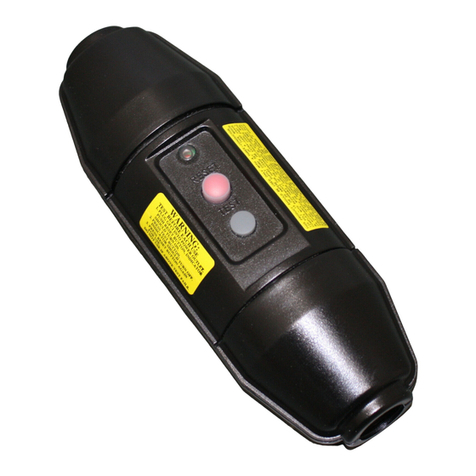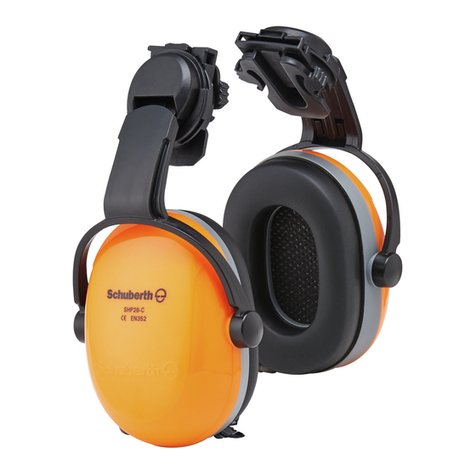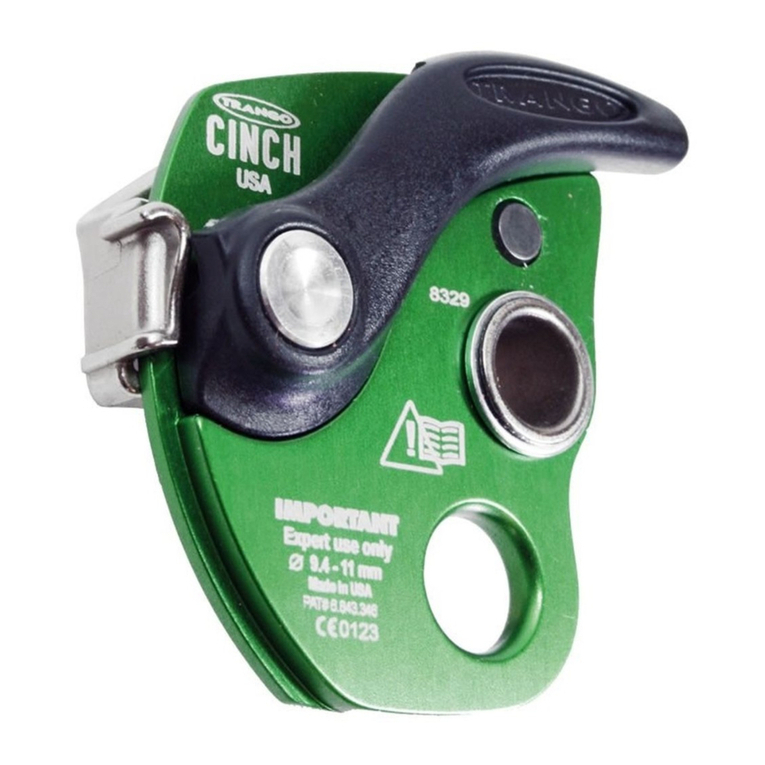The equipment is adjusted in factory so,
to keep its results, under no
circumstances its adjustment must be
changed.
THE CHANGE OF AN ADJUSTMENT
WOULD MAKE THE EQUIPMENT
DANGEROUS
CHECKING BEFORE USE
Before each use, carry out a thorough
visual examination to ensure that
thePPE, as well as any other equipment
with which it could be associated
(connector, lanyard…) is complete. Make
all necessary arrangements for the
implementation of any rescue in total
safety. In the event of your product being
damaged, consult the manufacturer or
his agent. If you have any doubts
regarding the safe condition of the
product, or if the product has been used
to arrest a fall,it is essential to your
personal safety that the PPE be
withdrawn from service and sent back to
the manufacturer or a qualified repair
centre for checking, or destruction.
Following examination, the centre will
either deliver or refuse written
authorisation to re-use the PPE.
It is strictly forbidden to modify or repair
a PPE yourself. Only the manufacturer or
a repair centre is qualified to carry out
these repairs (fig. 1.1).
When the system is delivered with an
integrated equipment, it is forbidden to
replace one of the components of this
system.
Carefully check the following points :
✔✔
All the cable or the webbing winds
out and in freely.
✔✔
The braking function operates by
giving a quick tug on the cable. The
cable should brake immediately.
(Picture 1.2)
✔✔
The device is in good condition and
the screws and the closing rivets are
present and suitably fixed.
✔✔
The extremity of the cable or the
webbing is suitably swaged or
sewed.
✔✔
The carabiners provided with the
device function and lock correctly.
✔✔
There is no trace of corrosion on the
metallic parts.
✔✔
The cable or webbing does not show
any sign of wear(tear, fraying,
breaking, corrosion, etc…) (Picture
1.3)
NOTE
Self-retractable fall arresters are
designed essentially to operate in a
vertical position. However, Some models
are also capable of opera-ting in the
horizontal position (for confirmation,
contact the maker of his agent). But,
before installing, it is highly advisable to
check there is no risk of pendulum
movement and to protect the cable from
any cutting edges or abrasive surfaces .
For retractable fall arrester fitted with a
fall indicator, check before use that the
fall indicator has not been activated. Its
activation demonstrates that the device
has been subjected to a fall or a
significant traction force. In this case, the
device must be returned to the
manufacturer or to a certified repair
centre for checks (Picture 2)
USE
Connexion :
✔✔The retractable type fall arrester
harness can be connected to a reliable
anchorage point by its handle or by a
connector, a lanyard, a fibre-type sling
compliant with standards EN 362, EN
354, EN 795.
✔✔The connector situated at the end of
the cable or of the strap of the
equipment must be connected to the
fall arrest anchorage point of the
harness.
ATTENTION DO NOT ATTACH THE
CABLE OF THE FALL ARRESTER TO
OTHER POINTS THAN THOSE INTENDED
FOR THIS SYSTEM. DO NOT ATTACH IT
DIRECTLY TO THE WEBBING, ON THE
ADJUSTMENT ELEMENTS OR ON THE
ACCESSORY HOLDER.THE “D“ BACK
ANCHORAGE POINT OF THE HARNESS
IS THAT WHICH WILL ALLOW, IN THE
CASE OF A FALL, THE BEST
POSITIONING (Picture 1.4)
Limits of use :
✔✔Maximum human load : 100 kg (Picture
1.5)
✔✔Temperature of use : from - 30°c to +
50°c (Picture 1.6)
✔✔Must always be placed above the user
(Picture 1.7)
✔✔Limit of pendular movement inferior to
30° (Picture 1.8)
✔✔Can not stop a sinking (pulverulents or
muddy products) (Picture 1.9)
7
GB
